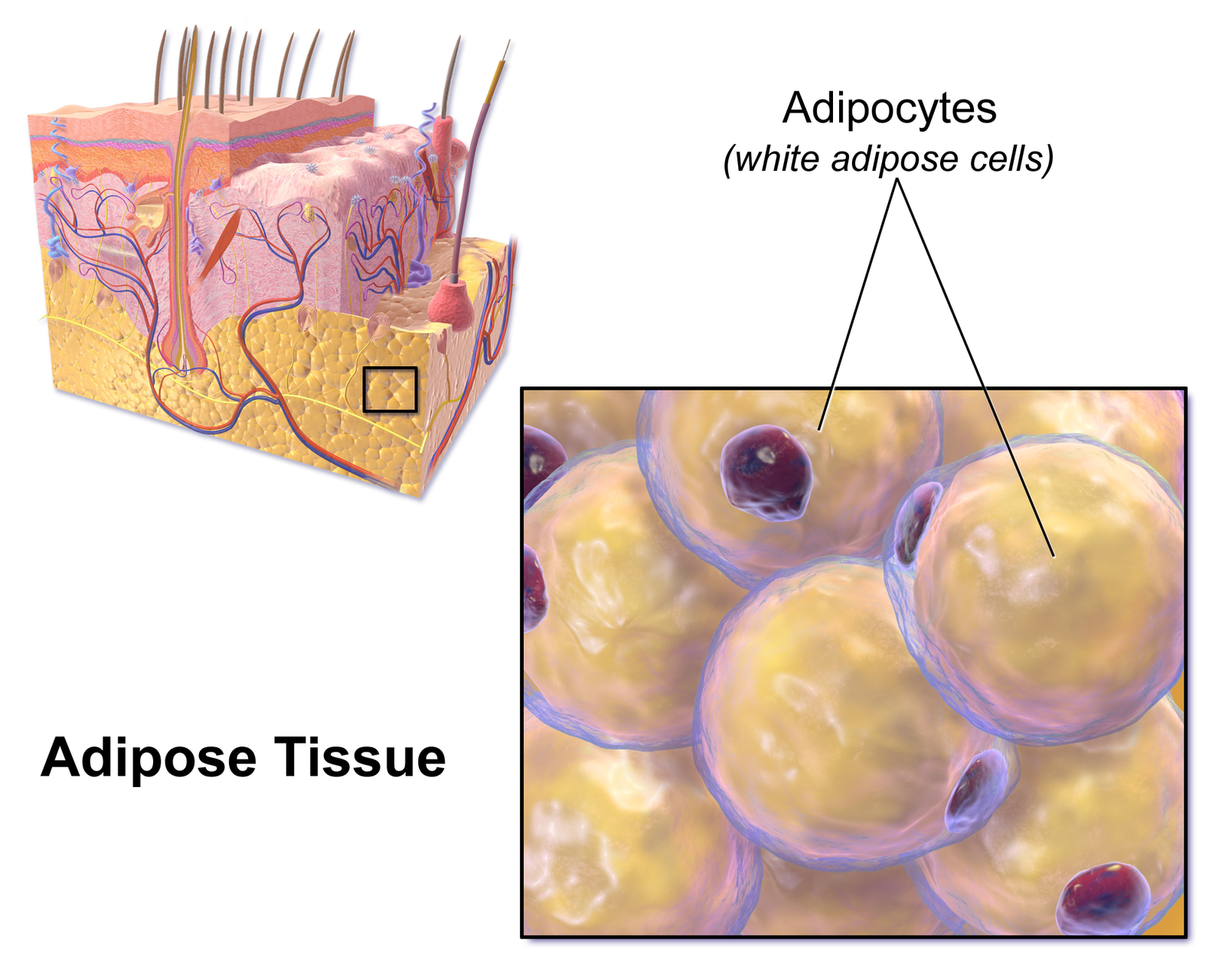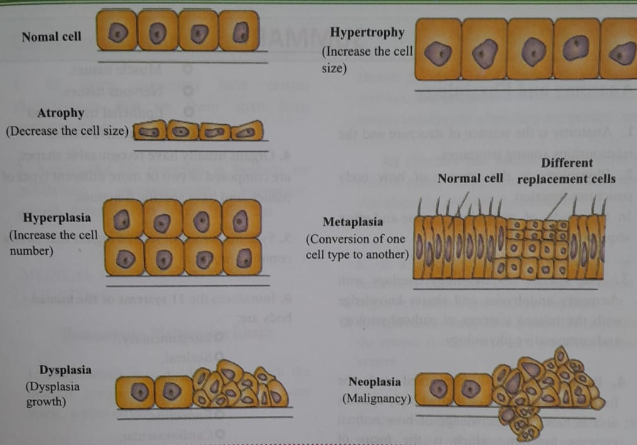Adipose tissue – The course is designed for the basic understanding of anatomical structures and physiological functions of human body, musculoskeletal system, digestive system, respiratory system; cardiovascular system; urinary system, endocrine system, reproductive system, nervous system, hematologic system, sensory organs, integumentary system, and immune system. The aim of the course is to acquire knowledge and skills regarding anatomy and physiology.
Adipose tissue

Adipose tissue is made up of fat cells, reticular fibers and large numbers of blood vessels.
Distribution:
In the subcutaneous tissue all over the body, except eyelids, scrotum and penish.
Function:
- Store house of energy
- Mechanical support of organs. It also acts as a shock absorber
- Insulation.
(Ref: PR. Ashalotha, Textbook of ANATOMY & PHYSIOLOGY for Nurses, 3rd edition, Jaypee p-17)

Atrophy: A decrease in cell size or number of cells is referred to as atrophy.
Hypertrophy: is the increase in the volume of an organ or tissue due to enlargement of its components cells.
Hyperplasia: when cell divide more quickly than previously, increasing cell numbers and size of the tissue/organ. e.g. -the glandular milk producing tissue of the breast during pregnancy and breast feeding
Metaplasia: is the transformation of one differentiated cell type to another differentiated cell type. The change from one type of cell to another may be part of a normal maturation process, or caused by some sort of abnormal stimulus.

Dysplasia:is a broad term that refers to the abnormal development of cells within tissues or organs.
Neoplasia: is new, uncontrolled growth of cells that is not under physiologic control. A “tumor” or “mass lesion” is simply a “growth” or “enlargement” which may not be neoplastic (such as a granuloma). The term “cancer” implies malignancy, but neoplasms can be subclassified as either benign or malignant.
–(Ref: Ross and Wilson, 12th edtion, p-52,53)
Read more:
